You don’t need a rambling country estate to rock a dreamy farmhouse kitchen. You just need the right mix of cozy textures, hardworking materials, and a few nostalgic touches that actually make life easier. Ready to turn your kitchen into the warm, welcoming heart of your home? Let’s do this.
1. Start With A Soulful Palette (And Keep It Cozy)
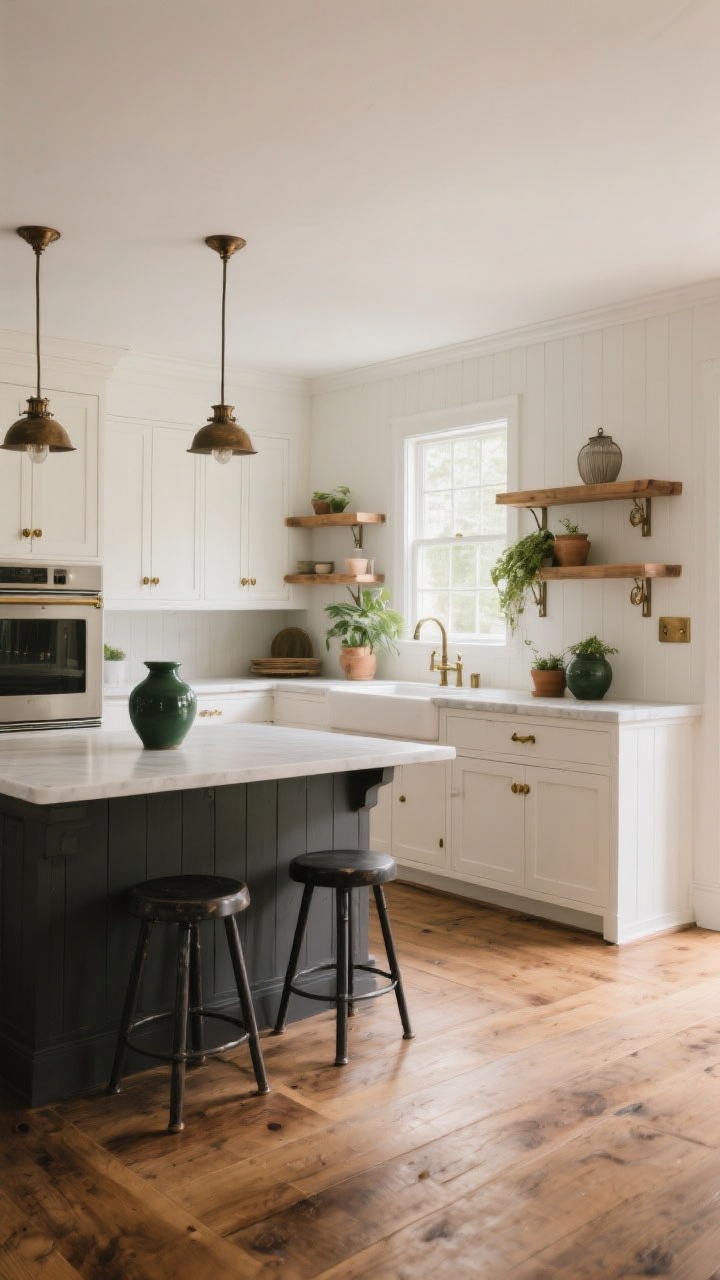
Farmhouse style isn’t sterile; it’s soft, lived-in, and warm. Think creamy whites, gentle grays, and earthy taupes with a few moody accents—like charcoal or deep olive—for contrast.
Why It Works
- White + wood is the farmhouse power couple. It brightens the space and still feels grounded.
- Warm metals (brass, aged bronze) add instant patina without trying too hard.
- Natural greens soften the room and play nicely with wood tones.
Quick Tips
- Test paint in different light. Farmhouse vibes can turn cold if your white is too stark.
- Layer tones: off-white cabinets, warm white walls, and a deeper island.
- Use matte finishes to keep it soft and unfussy.
2. Mix Old And New For Real Character
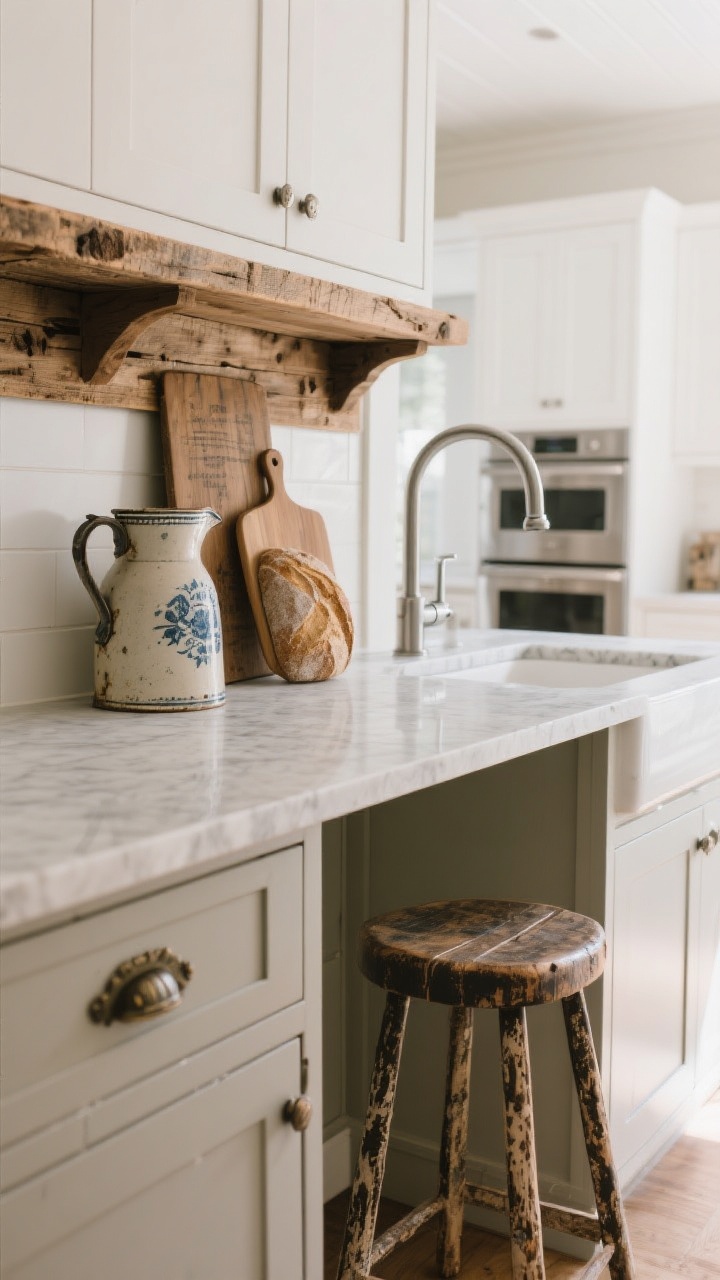
Farmhouse style looks best when it’s a little collected—not catalog-perfect. Blend vintage finds with modern conveniences so it feels curated and intentional.
What To Mix
- Vintage: an old bread board, ironstone pitchers, a reclaimed stool.
- New: efficient appliances, smooth-gliding drawers, modern faucets.
- Reclaimed: wood beams, mantel shelves, or an antique hardware moment.
FYI: One truly old piece (like a farmhouse table or antique pot rack) can anchor the whole room and make everything around it feel more authentic.
3. Embrace Workhorse Surfaces That Age Gracefully
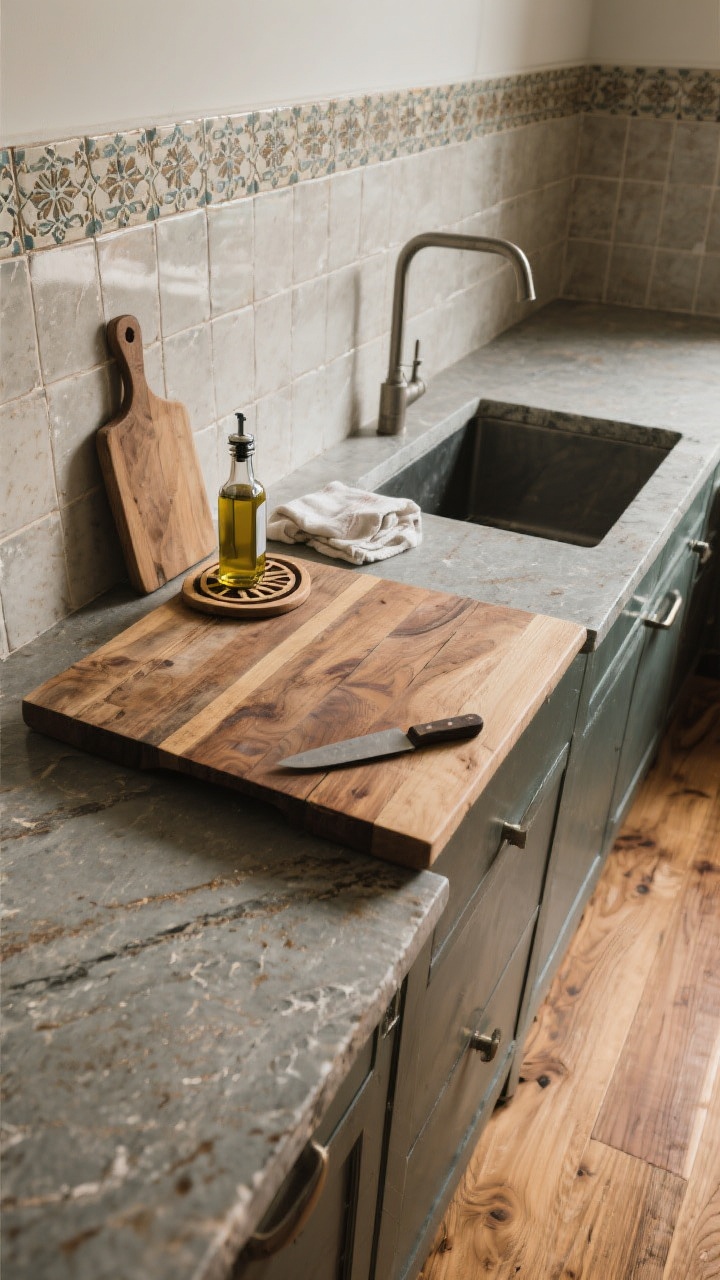
Farmhouse kitchens are meant to be used. Choose materials that look better with a few dings and coffee rings—aka a life well lived.
Best Bets
- Butcher block counters: Warm, repairable, and great for prep zones.
- Honest stone (soapstone, honed marble): Expect patina; it’s part of the charm.
- Textured tile: Handcrafted subway tile, zellige, or matte ceramics for depth.
- Durable flooring: Wide-plank wood, luxury vinyl plank in a warm oak tone, or tumbled stone.
Low-Maintenance Moves
- Seal stone yearly and relax about perfection.
- Use cutting boards and trivets where it counts.
- Spot-sand and oil butcher block every few months for that fresh glow.
4. Open Shelves, But Make Them Practical
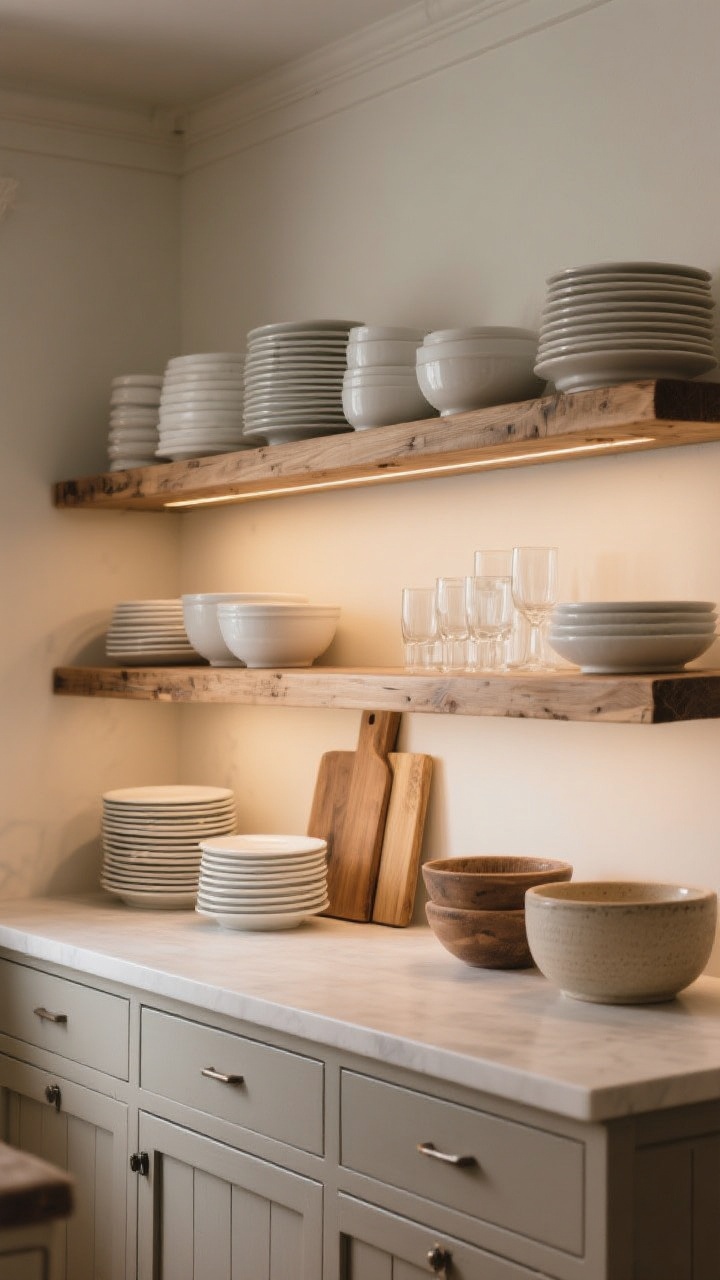
Open shelving can look gorgeous…but it needs rules, or it’s a dust-collecting chaos magnet. Keep it curated, color-coordinated, and useful.
How To Style It
- Daily-use items up front: white plates, glassware, mixing bowls.
- Group by material for cohesion—ceramics together, wood together, glass together.
- Vary height and shape to avoid “flat shelf syndrome.” Stack, lean, and layer.
Smart Shelf Tips
- Limit to 2–3 shelves per wall to keep visual calm.
- Add under-shelf lighting for a warm glow on pretty pieces.
- Use closed cabinets below for the not-cute stuff (looking at you, mismatched Tupperware).
5. Farmhouse Sinks And Friendly Faucets
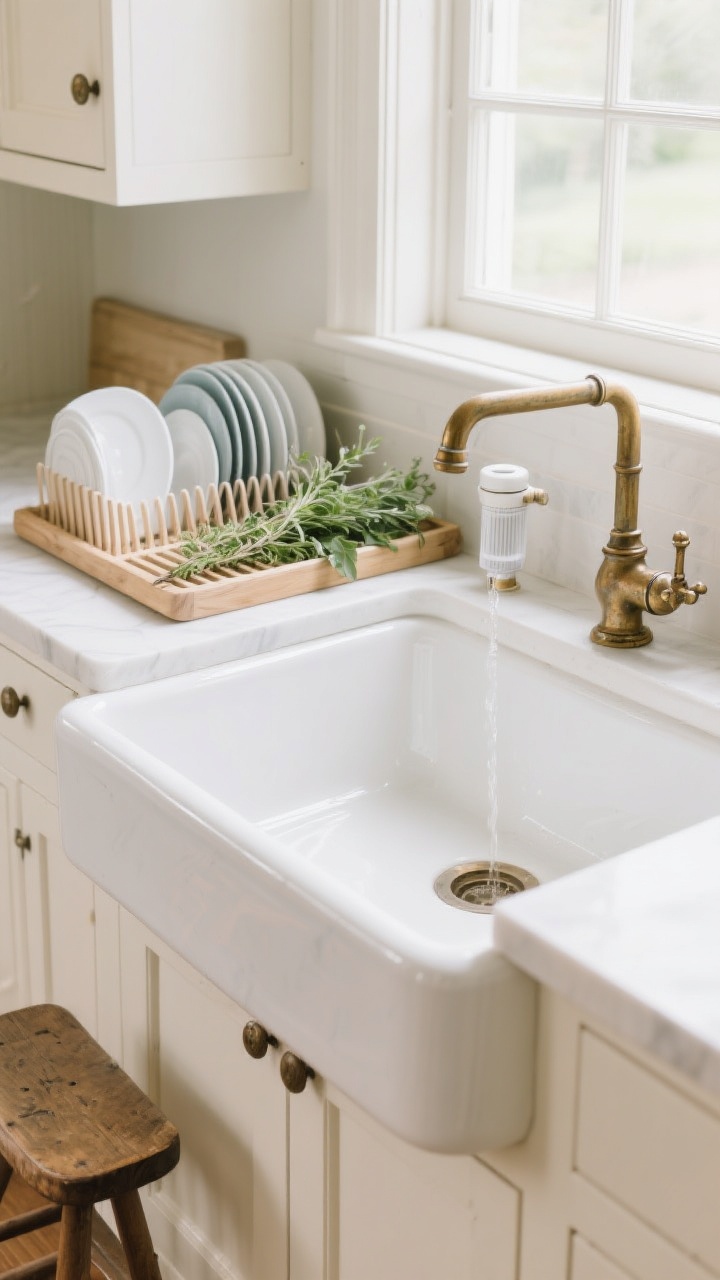
The apron-front sink is basically the farmhouse icon. Deep, wide, and ridiculously photogenic, it’s perfect for big pots and even bigger bouquets.
What To Look For
- Fireclay for durability and classic shine; cast iron for a traditional feel.
- Bridge or gooseneck faucets in aged brass, black, or polished nickel.
- Spray features because we like pretty, but we love practical.
Pro Tips
- Pair the sink with a drainboard or ribbed tray for drying dishes and produce.
- Add a filtered water tap if you have room—it’s a small luxury you’ll use daily.
- Install a toe-kick step stool for little helpers or high shelves.
6. Layer Textures Like A Pro (Instant Coziness)
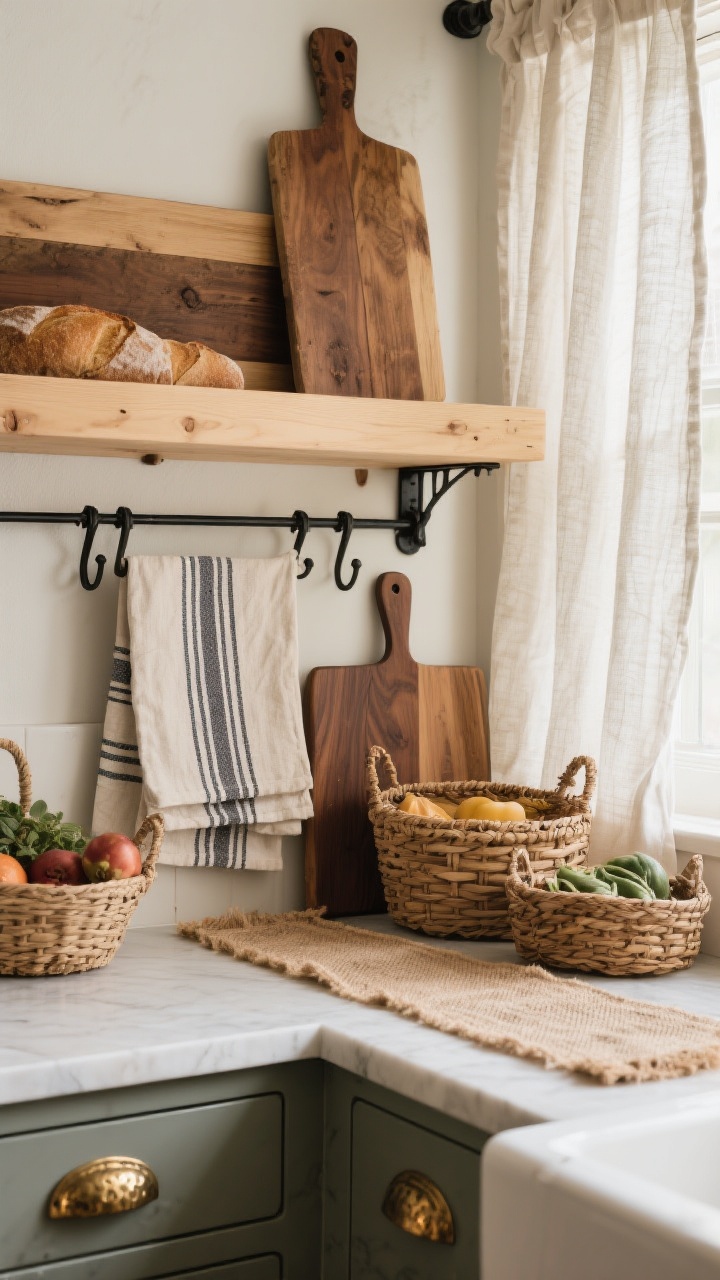
Texture is where farmhouse kitchens come alive. You want it tactile: smooth stone, nubby linens, timeworn wood, soft rugs.
Texture Playbook
- Textiles: linen cafe curtains, striped tea towels, a jute runner.
- Wood tones: mix light oak, mid-walnut, and a rustic cutting board or two.
- Woven baskets: for produce, napkins, and bread. Cute and clutter-hiding.
- Metal accents: hammered drawer pulls, matte black hooks, aged brass sconces.
IMO, if your kitchen feels flat, it’s usually missing a few layered textures and a hint of contrast.
7. Add Lighting That Feels Warm And Gathered
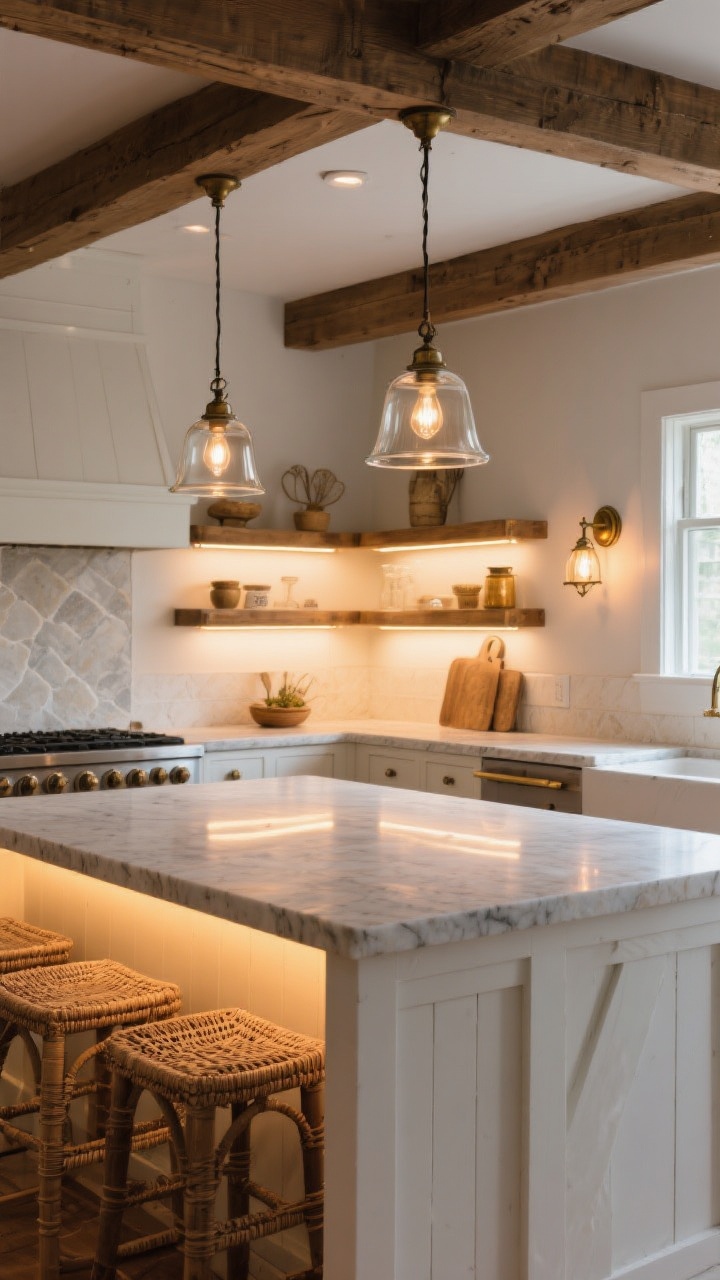
Good lighting is everything, especially in a farmhouse kitchen where ambiance matters. Mix task, ambient, and accent lighting for that soft glow that makes everyone linger.
Lighting Layers
- Pendants over the island: bell-shaped glass, enamel shades, or woven rattan.
- Under-cabinet lights: warm LED strips for evening coziness.
- Wall sconces: over open shelves or the sink for vintage charm.
Little Luxuries
- Use warm bulbs (2700K–3000K) to avoid the hospital vibe.
- Put everything on dimmers—breakfast bright, dinner moody.
- Consider a statement lantern or chandelier if you’ve got high ceilings.
8. Make Storage Pretty (And Crazy Functional)
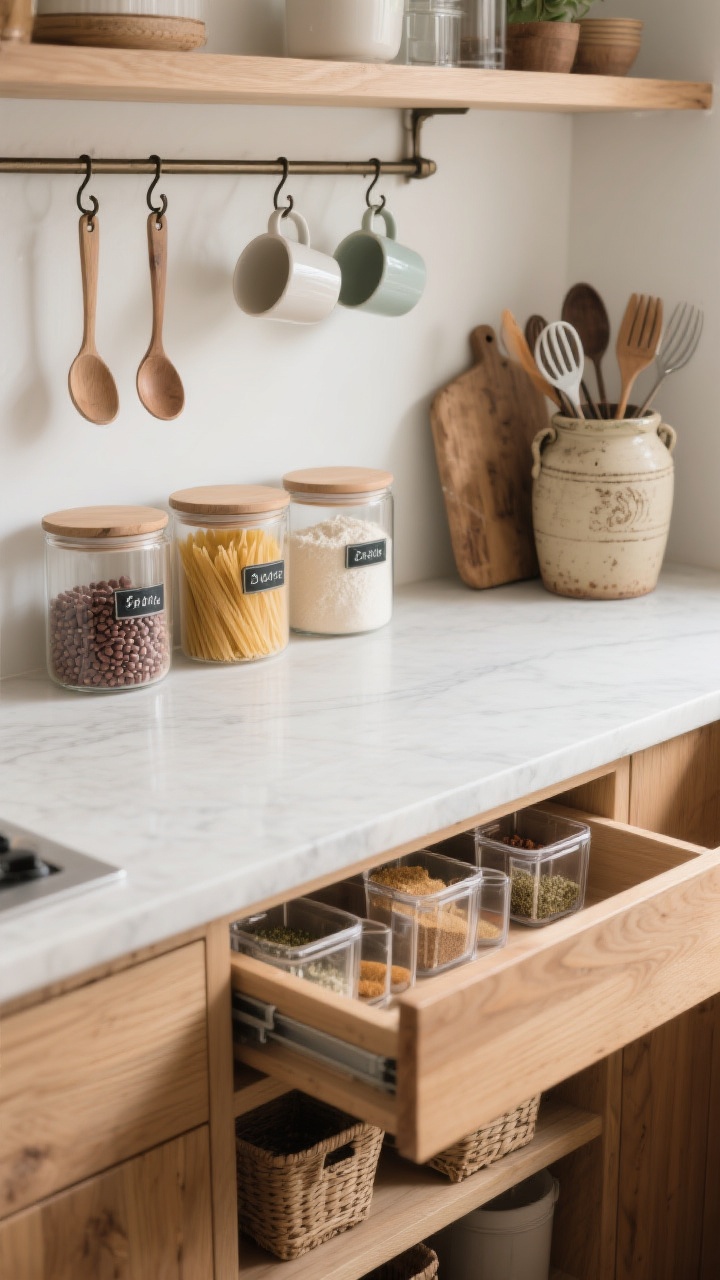
Farmhouse kitchens shine when form meets function. Translation: smart storage that looks charming.
Ideas That Work
- Glass canisters for dry goods—beans, flour, pasta—stacked on a shelf or counter.
- Rail systems with S-hooks to hang mugs, measuring spoons, or small pans.
- Vintage crocks for utensils—grabby and gorgeous.
- Pull-out trays for spices, trash, and cleaning supplies (hidden but handy).
Pantry Power-Ups
- Label everything in a simple font and stick to clear containers for easy inventory.
- Use shallow baskets to group snacks and baking supplies.
- Mount a chalkboard or pinboard on the inside of a door for lists and meal plans.
9. Style With Quiet Storytellers (The Fun Part)
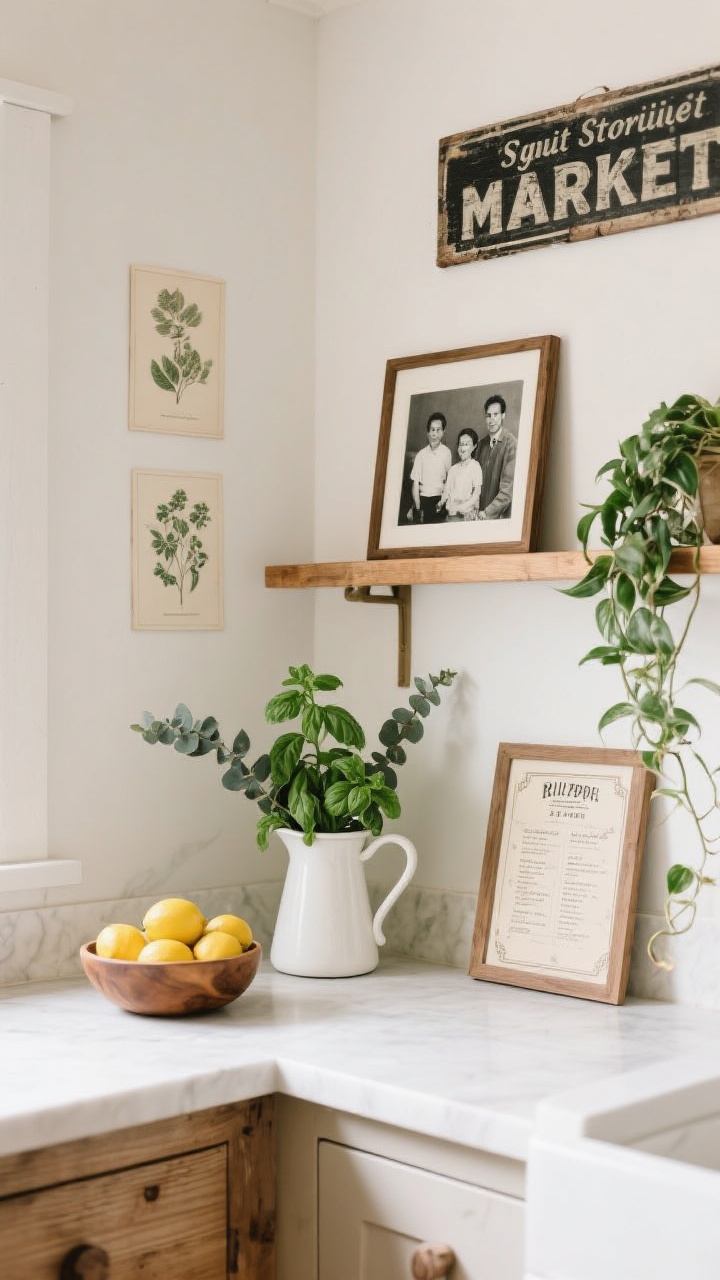
Now the personality. Farmhouse is all about those soft, nostalgic touches that tell your story—without turning the kitchen into a barnyard theme park.
Decor That Feels Right
- Art in the kitchen: landscapes, botanical prints, or black-and-white family photos.
- Greenery: potted herbs, eucalyptus in a pitcher, or a trailing pothos.
- Text signs (sparingly): vintage market signs or recipe cards framed—keep it subtle.
- Seasonal swaps: switch linens, swap stems, add a harvest bowl of apples or lemons.
Stick to a “useful-or-beautiful” rule. If it doesn’t earn its spot, it doesn’t stay—Marie Kondo would be proud.
Final Thought: A farmhouse kitchen should feel like a warm hug—beautiful, practical, and a little imperfect. Start with a cozy palette, layer textures, choose materials that love a little wear, and add character with vintage accents and thoughtful lighting. Your kitchen will feel instantly more inviting—and yes, people will absolutely find excuses to hang out there. Go brew a pot of coffee and enjoy your new favorite room.
